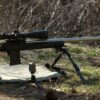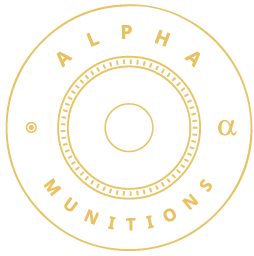
Though I’ve heard mention of carbon ring build-up it wasn’t until I got to the 6 Creedmoor portion of the large/small rifle primer comparison (last Kauber’s Corner article) was I aware first hand of the problems caused by carbon (powder residue) build up in the bore.
An established carbon ring manifests itself with sudden and progressive spikes in pressure; pressures bordering on the dangerous and in most cases degradation inaccuracy will result. The tremendous amount of heat and pressure transforms carbon fouling into a ceramic coating that is difficult to remove once it has welded itself in your rifling.
Every experienced match shooter, barrel builder, or gunsmith has his or her way of cleaning rifles but most will agree that a hard carbon ring can’t be removed by standard cleaning methods, it has to be scrubbed out. There lies the fine line between effectively removing the carbon ring and damaging your bore by using a compound too aggressive, overdoing the process, or a combination of both.
Not one to attempt to reinvent the wheel or waste time on the Internet trying to decipher the repeated BS from good, sage advice and recommendations, I’ll go directly to those I feel are true authorities based on years of personal experience and an application of said advice in the conduct of their livelihood. When I couldn’t figure out the pressure problems in my Benchmark Barrel built 6 Creedmoor I immediately drove the 20 minutes from home down to Arlington, WA to speak with my long time friends Ron Sinnema and Bill Broderick owner and manager respectively of Benchmark Barrels.
Below is their recommendation for removing the carbon ring:
Cleaning Carbon Ring In Rifle Barrels
Carbon ring in the rifle bore can affect accuracy, pressure and velocity. It is more likely to occur in cartridges with large case capacity and small bore diameter. Carbon ring is best identified with a bore scope and will appear as dark and cracked areas of the bore. It is usually 1”-2” in front of the throat and chamber or within the first 30% of the bore. If you clean every 100-200 rounds in a suspect cartridge you may need to use the steps outlined below. It is ideal to inspect with a borescope to determine whether you have issues with carbon ring build-up and where it appears in the bore.
- Clean all fouling and copper from the barrel using your normal cleaning method.
- Use a coated rod with a quality jag that is undersize by one caliber – use high-quality flannel or cotton patches.
- Fold a patch for a tight fit without sticking, cut/fold appropriately – it is important that your folded patch is tight in the bore almost to the point of becoming stuck.
- Most carbon will be 1”-2” in front of the throat and chamber or within the first 30% of the bore.
- Put a light coat of Simichrome on the patch being careful to place it on the sides of the patch and the front – this keeps the front of the patch from getting wet and the jag from pushing through the patch.
- Push the wet patch all the way through the barrel in one even stroke.
- Reapply Simichrome to the same patch as above and clean the first third of the barrel using short back and forth strokes – concentrate your effort on the first 30% of the bore – do this for about 2 minutes being fairly aggressive while keeping in mind that the barrel may warm up slightly, especially with the light contour barrels.
- The patch will become loose in the bore during your 2-minute cycle, discard it, and create a new one as outlined in step 3. When you replace the patch during a cycle, do not apply more Simichrome, use the media left in the bore with the new dry patch.
- Repeat steps 3 through 8 for ONLY two cycles*.
- Clean as normal to remove the residual Simichrome and fouling. The objective is to remove the carbon ring but not to polish the bore to the point of being too shiny.
* If you do not have a borescope, do not exceed the recommended 2 cycle cleaning procedure with Simichrome. If you have a borescope, inspect so you know where to focus your effort and clean until most of the carbon is removed. Some residual streaking etc. is acceptable.
I’ll probably receive a ton of comments about this next statement but I do not recall, after loading and shooting several thousand rounds of 260 and 6.5 Creedmoor with H4350 did I experience much of a carbon ring issue. It wasn’t until I started using RL-16 in the 6.5 to some extent and the 6 Creedmoor primarily did I encounter this problem. When I look down the bore of my 6 after a string, I swear the bore fouling looks the same as the bore of my Shiloh Sharps 1874 45-70 BPCR. Don’t get me wrong though, I’ll continue to use RL-16 in the 6 Creedmoor along with the other temperature-insensitive Alliant powders but rest assured I’m going to stay ahead of the issue by cleaning much more frequently with a solvent designed for carbon fouling removal. So far I’ve had great luck with Bore Tech’s C4 Carbon Remover, though I’m sure there are other solvents that may do just as well.
If you’re experiencing or suspect a carbon ring build-up in your own match rifle, here’s the component recommended for removal of that stubborn ring.
Stay Safe,
Jim Kauber
Alpha Munitions CSO
President / Director of Training
The Site Firearms Training Center








